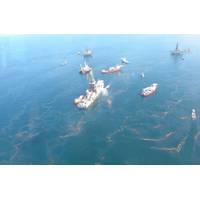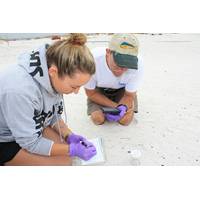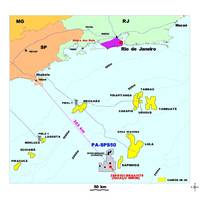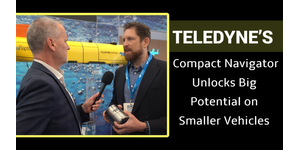Ocean, Space-themed Missions for MATE ROV Competition
Waters. This year’s competition highlights technologies that are developed for exploration and scientific use in both ocean and space environments. For example, in the ocean-themed missions, students will use their ROVs to turn a decommissioned oil rig into an artificial reef and collect oil samples and coral specimens. The space-based missions challenge students to pilot their ROVs under the ice sheet of Jupiter’s moon Europa to collect data and deploy instrumentation. The Great Lakes Regional MATE ROV Competition promotes the development of entrepreneurship and leadership skills
Coast Guard to Host Underwater Robotics Competition
. This year’s competition highlights technologies that are developed for exploration and scientific use in both ocean and space environments. For example, in the ocean-themed missions, students will use their ROVs to turn a decommissioned oil rig into an artificial reef and collect oil samples and coral specimens. The space-based missions challenge students to pilot their ROVs under the ice sheet of Jupiter’s moon Europa to collect data and deploy instrumentation. Schools participating include: Washington Middle, Nanaikapono Elementary, Radford, Castle High, Highland
Schlumberger Unveils Microfluidic Analysis Technology at OTC
Conference the release of the Maze* microfluidic SARA analysis for reservoir fluids characterization. This is the first commercial application of microfluidic analysis technology in the oil and gas industry. The Maze microfluidic SARA analysis fully automates the process for testing oil samples for saturates, aromatics, resins and asphaltenes (SARA)—coupling novel microfluidic technology with spectroscopy. This method eliminates human subjectivity enabling precise SARA measurements, while decreasing turnaround time and use of chemicals by more than 85%. "Conventional

Deepwater Horizon Spill Causes Fish Abnormalities
larvae.” Recent studies are increasingly painting a more detailed picture of how oil-derived polycyclic aromatic hydrocarbons (PAHs) act on the heart. Earlier this year, the Stanford-NOAA team showed in a related paper published in Science (Brette et al. 343: 772) that Deepwater Horizon crude oil samples block excitation-contraction coupling -- vital processes for normal beat-to-beat contraction and pacing of the heart -- in individual heart muscle cells isolated from juvenile bluefin and yellowfin tuna. “We now have a better understanding why crude oil is toxic, and it doesn’t

Scientists Train Students on Oil Spill Research
students in Florida to collect remnants of oil from Gulf Coast beaches this week. Marine chemist Chris Reddy studies how the many compounds that compose petroleum hydrocarbon, or oil, behave and change over time after an oil spill. He and his researchers have collected and analyzed about 1,000 oil samples from the Gulf Coast since the Deepwater Horizon oil spill. "With an iconic and wide-ranging spill like Deepwater Horizon, the need to perform such long-term studies is a top priority for me," said Reddy. He has already catalogued many of these samples in an on-line database to make

Petrobas Finds Oil Again Offshore Brazil
;u Mirim, is located 303 km off the coast of the state of São Paulo, and oil was struck at a water depth of 2,158 m. The exact location is 34 km south of the discovery well (1-SPS-50 - Carioca) and 9 km south of the Iguaçu well (see map). This new discovery was confirmed through oil samples of approximately 20° API, taken via cable test from pre-salt carbonate reservoirs starting at a depth of 4,850 meters. The consortium of BM-S-9 is operated by Petrobras (45%) in partnership with BG E&P Brasil (30%) and Repsol Sinopec Brasil (25%). The deadline for the 'Declaration of



 February 2025
February 2025





